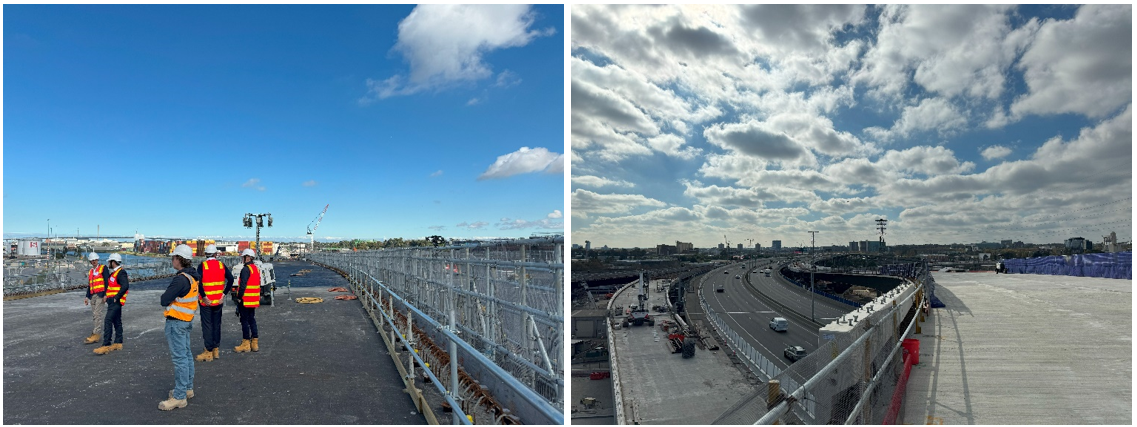Essential infrastructure — Transurban's monopoly rolls on
Inside the Enhanced Yield Fund
By Jeff Brown, PM Capital
Introduction
Achieving market share in an industry is one of the most underappreciated business strategic outcomes, let alone achieving near 100%. Monopolies are hard to find. Even when they are discovered, they are often 100% government owned and difficult to invest in as standalone businesses.
However, one private company which has been able to attain the coveted “monopoly” status is Transurban. The toll-road behemoth has achieved status of guardian of Australian infrastructure – with a well managed 20 of 21 private roads under their hood. Indeed, sometimes the best in the world can be seen right on our doorstep.
1. Competition neutralised
When you can neutralise competition, a clear potential for profitability occurs. Even better is when you have a locked in contract to avoid competition for periods of up to 50 years.
Transurban has achieved this. State governments set up binding contracts and continue to work closely with Transurban on future deliveries, road expansions, upgrades and projects with 20-year pipelines in place. This has allowed Transurban to become the preferred party in the core “road orbitals” which will remain central to cities for decades to come.
Australia is now dependent on Transurban. It only takes a quick reflection on the recent site tour and investor day to notice that absent any new investment in the road regime, traffic speeds across the competing free public road system in Sydney, Melbourne and Brisbane could drop to below 40km/h by 2040. When there is an incumbent who can do the job for a set period, this is often a key driver of replicability, predictability and profitability.
2. Embedded within the future planning of cities – stabilising costs
From inspecting the sites across Melbourne and speaking to contractors on site, it was clear that Transurban are held in high regard. To be aligned with Transurban means a continued window into an ongoing pipeline of upgrades and potential new projects. This dynamic holds Transurban in good stead for continued partnerships and collaborative solution-based approaches to development.
Further, with an ability to lock in fixed pricing for numerous builds (i.e. to avoid exposure to the construction risk on a project except for only a couple of raw materials with caps in place) is something that most infrastructure assets would dream of having on their books.
Speaking with key executives and stakeholders across the broader transportation network during our time in Melbourne, it was noted that the collaborative positioning of Transurban had become embedded into city planning and negotiations at every stage – maintaining the core pipeline with a responsible cost management approach.

Source: Transurban, PM Capital
(Left) West Gate Tunnel directly adjacent the Port of Melbourne. (Right) West Gate Tunnel strategically integrates with CityLink; compounding volumes.
3. Pricing power – stabilising revenues
Last, but certainly not least, pricing is key. In our insight piece last year, we detailed the strong volume dynamics at play for Transurban. This is particularly evident given the ability to own roads in unique locations with no competition of similar adjacent motorways.
On the pricing equation, it is a double positive. Having access to a pre-agreed government schedule where toll prices are directly linked with inflation, is the type of deal that is highly beneficial, particularly for a long-term operator. What is often underestimated is that with high inflation in early years of a regime, the benefits are compounded with strong earnings in the initial stage of the contract providing a locked-in high revenue base for years to come.
Conclusion
When it comes to investing, the business model is key. An asset may look fantastic on paper, as per many infrastructure assets, however what truly drives value is how they are run, and the pricing and costing agreements in place.
This has been a key focus for us across our suite of investments in global infrastructure – and we continue to carefully monitor the strategic positioning of Transurban. We observe the strong and well-maintained leadership provided in terms of negotiated contracts with contractors and governments, and as such have been confident with this name in the Enhanced Yield Fund portfolio for some time.
By focusing on the performance and structural contracts surrounding these underlying assets, and not market volatility, we highlighted the resilience of these unique assets. This allows us to invest in essential Australian infrastructure assets at what we believe were attractive yields.
This is the sort of investment we look to add to the Fund: highly cash-generative monopoly assets – a strong example of an investment anomaly that was overlooked by the market.
About the author
Jeff Brown is a Credit Analyst at PM Capital, a leading asset manager of global and Australian equities and fixed income. More PM Capital Insights are available here.
This insight is issued by PM Capital Limited ABN 69 083 644 731 AFSL 230222 as responsible entity for the PM Capital Enhanced Yield Fund (ARSN 099 581 558, the ‘Fund’). It contains summary information only to provide an insight into how we make our investment decisions. This information does not constitute advice or a recommendation, and is subject to change without notice. It does not take into account the objectives, financial situation or needs of any investor which should be considered before investing. Investors should consider the Target Market Determinations and the current Product Disclosure Statement (which are available from us), and obtain their own financial advice, prior to making an investment. The PDS explains how the Fund’s Net Asset Value is calculated. Past performance is not a reliable guide to future performance and the capital and income of any investment may go down as well as up. The Yield to Maturity is before fees. The yield to maturity is not a forecast of expected Fund performance (including distributions) and it provides a simple snapshot (at the time of this report) of the estimated before fees yield return of the portfolio holdings should they be held to maturity, and assumes that the bond issuers meet all their coupon and maturity obligations.


